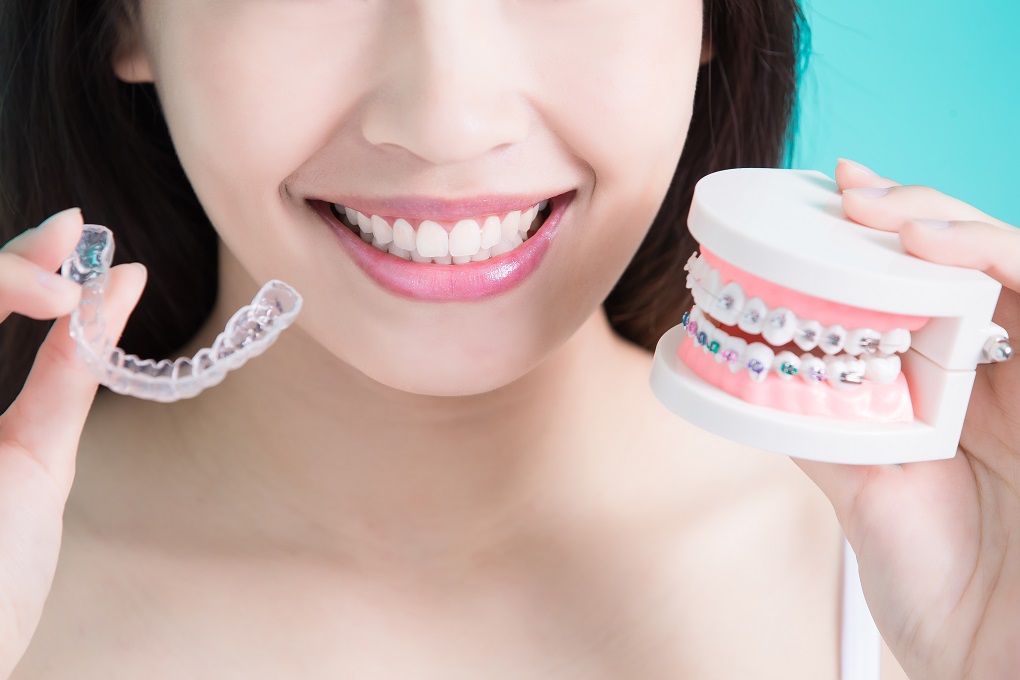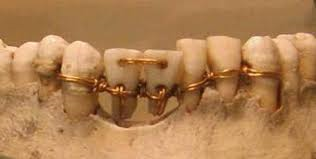It is evident from archaeological finds that even the Neanderthal men had suffered from tooth and jaw irregularities. However, humanity had been without remedy for the problem for ages, before finding the first useful solution approximately 3,000 years ago. Let us take a look at how orthodontia has developed throughout the time.

Ancient Appliances and Attempts on Orthodontics
In the ancient times, Egyptians were the first to have a try at aligning teeth. They recognized that teeth move when applying soft but regular pressure, and thousand-year-old Egyptian mummies have been found with metal strings wrapped around each crooked tooth. Finds also hint that cat guts had been used to close tooth gaps. It is rumoured that also the legendary female ruler, Cleopatra wore braces to achieve a perfect smile.
Similarly, Etruscans also used orthodontic appliances on their dead, to prevent the teeth from crumbling in the afterlife. Around 400-300 BC, the Greek father of medical sciences, Hippocrates and the philosopher Aristotle were the first to contemplate in writing about how to cure dental anomalies. Evidences found in Greek tombs prove that the theory was put into practice: several bodies had been found with strings of animal or herbal origin wrapped around their teeth, probably to reduce unevenness.

The Rise of Modern Orthodontia – 18th and 19th Century
During the middle ages people were mostly preoccupied with surviving the Black Death and discovering the world. Thus, further development in the science of orthodontics only began during the 18th century. The two leading figures of this renaissance were the Frenchmen Pierre Fauchard and Etienne Bourdet. Fittingly called the Father of Orthodontia, Fauchard was bothered by the fact that orthodontics was based mainly on empiricism, and placed this branch of dentistry on a scientific base. In his book The Surgeon Dentist he described a U-shaped object made of precious metals called bandeau, being the predecessor of all orthodontic appliances. Later, Bourdet, who was also the dentist to the King of France, discovered the significance of removing premolars in the prevention of crowding, and detailed his experiences in his work The Dentist’s Art.
From that time, there was no stopping the development of this branch of science. Frenchman Christophe-François Delabarre introduced the revolutionary wire crib, while the dentist to Prince Charles of Prussia, Friedrich Christoph Kneisel was the first to make plaster models of his patients’ teeth, and also invented the first removable orthodontic appliance.
During the 19th century, the USA became the leader of the development of orthodontia, and showcased the greatest inventions. For instance, rubber bands for alignment and X-ray as a means of diagnosis were used for the first time there. The appliances used during this time were quite uncomfortable, robust, and needed frequent adjustments, but also provided great results.
The Golden Age of Orthodontics
In the last 100 years, development of orthodontic appliances and methods has skyrocketed, and made the whole procedure easier, shorter, less painful and, last but not least, less obvious. Conventional braces with brackets appeared in the 1970’s, and are still used, being the most widespread method to treat great unevenness of the teeth. They are mostly made of stainless steel, sometimes combined with titanium or gold. Newer technologies, however, use sapphire or porcelain brackets instead of metal, making these appliances more natural looking.
Practically invisible lingual braces, which are placed on the inner side of the teeth, are becoming more and more popular. Meanwhile, the newest revolutionary invention, invisible braces, which are a set of computer-made, clear, basically imperceptible plastic aligners, are making history in the world of orthodontia.

